| Author |
 Topic Topic  |
|
|
Gerard
Scientific Collaborator
    
France
5296 Posts |
 Posted - 27/12/2012 : 09:14:49 Posted - 27/12/2012 : 09:14:49



|
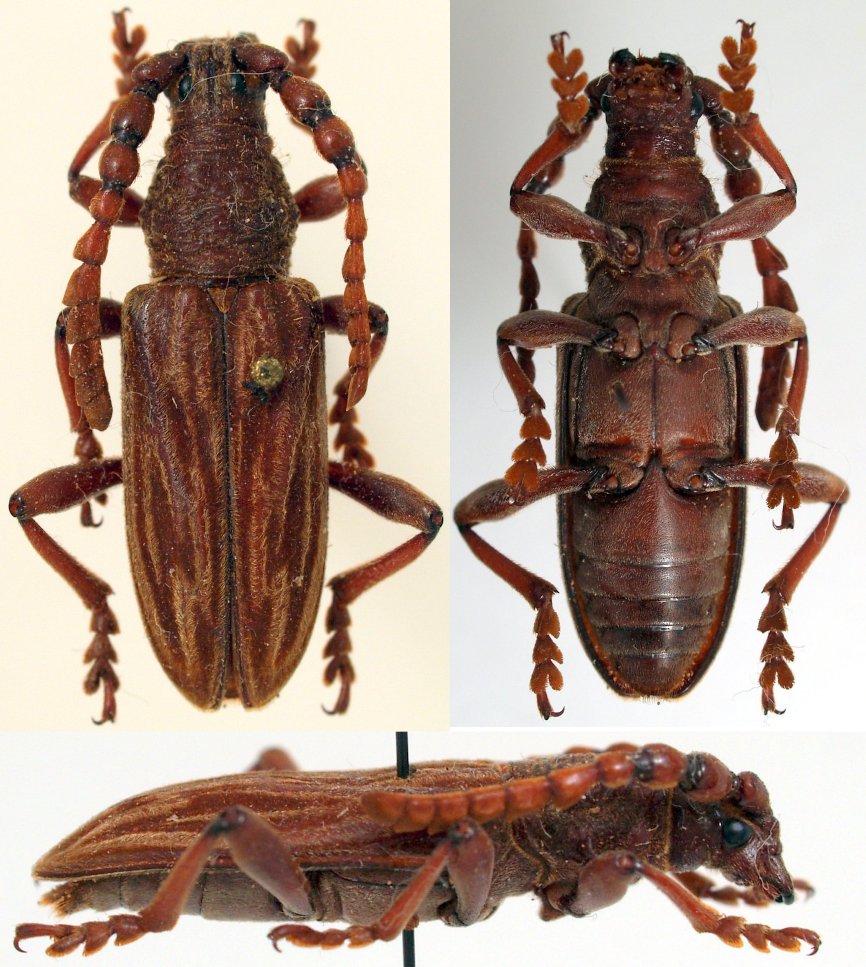
187.53 KB
INDONESIE, Ile de Bali, XII.2010, taille 22 mm
Bonjour le genre ne me pose pas de problème, mais pour l'espèce je ne suis pas sûr.
Je pense à Pachylocerus corallinus Hope, 1834
Une de plus pour ton site. |
Edited by - Xavier on 26/02/2017 12:10:05 |
|
|
dryobius
Member Rosenbergia
   
USA
1887 Posts |
 Posted - 27/12/2012 : 15:18:22 Posted - 27/12/2012 : 15:18:22



|
Hi Gerard,
of course it is a male of P. corallinus.
Vives and I have a paper in press (Cahiers) of a new species from Sabah, based on one female. And it very, very similar to P. corallinus...!! I don't have a female of P. corallinus in my collection, nor even a photograph.
In time, it is possible that we may discover we have a synonym or a subspecies.
The new species from Sabah has some stiking similarities, but there are also some very subtle differences, to P. corallinus.
It would be nice to have more material from Borneo, Sumatra & Java, however, P. corallinus appears to be the most common species in this region and most specimens are from Bali.
|
 |
|
|
Gerard
Scientific Collaborator
    
France
5296 Posts |
 Posted - 27/12/2012 : 15:36:10 Posted - 27/12/2012 : 15:36:10



|
Thanks Dan for the confirmation. |
 |
|
|
horshehden
Member Purpuricenus
 
Czech Republic
424 Posts |
 Posted - 27/12/2012 : 18:48:33 Posted - 27/12/2012 : 18:48:33



|
That's another species that comes with troubles. I have one ex from Bali, as well - probably a female.
It was described by Hope from "East Indies", which might be well some of the Sunda islands. Does anybody knows where "vicinity of Omlecope Dawar" is located?
However, Gahan states it from S India (Nilgiri Hills and Bombay) - there are not many species that occur both in S India and Bali.
If Gahan is right, the specimen at the photo shoudl not be P. corallinus - two black or at least dark and rather wide longitudinal bands; abdomen as well dark.
Anyway, a similar statement can be found in the description of Hope (abdomine nigricante; vittisque duabus nigris notata, vitta interna basi interrupta).
I cannot see nothing like that at the photo. May be, Eduard checked the holotype? |
 |
|
|
Robert
Member Rosenbergia
   
Canada
1249 Posts |
 Posted - 27/12/2012 : 19:20:51 Posted - 27/12/2012 : 19:20:51



|
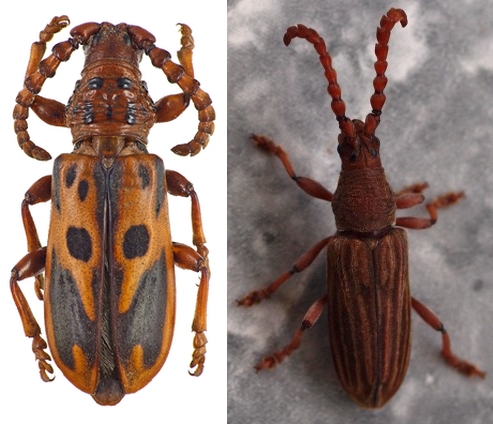
There seems to be some confusion regarding this species.
The attached picture represents which MIGHT be P. corallinus (Sri Lanka) at the left, and P. sulcatus (Thailand) at the right.
I dont have the original descriptions, and I took those pictures on the Net, so this may be wrong, but I decided to post it anyway to fuel this discussion. I hope it wont add more confusion though... |
Robert V. |
 |
|
|
horshehden
Member Purpuricenus
 
Czech Republic
424 Posts |
 Posted - 27/12/2012 : 19:44:11 Posted - 27/12/2012 : 19:44:11



|
| The one from Sri Lanka is P. crassicornis - according to figure in Gahan (1906). |
 |
|
|
dryobius
Member Rosenbergia
   
USA
1887 Posts |
 Posted - 27/12/2012 : 19:46:30 Posted - 27/12/2012 : 19:46:30



|
The plate in Hope (1834) shows P. corallinus. Unfortunately, I now believe that the species from Bali is not P. corallinus.
Neither of Robert's images look like a good match for P. corallinus either, although P. sulcatus and P. corallinus are a little similar.
All I can say is that this genus needs some study. Vives and I looked at types of parvus and pilosus. Perhaps he saw some other types. |
 |
|
|
Robert
Member Rosenbergia
   
Canada
1249 Posts |
 Posted - 27/12/2012 : 22:12:03 Posted - 27/12/2012 : 22:12:03



|
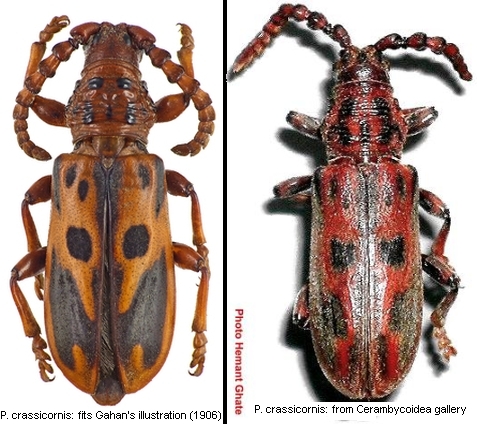
Thanks horshehden and Dan. This species seems to show a good color / pattern variation. |
Robert V. |
 |
|
|
Gerard
Scientific Collaborator
    
France
5296 Posts |
 Posted - 27/12/2012 : 22:40:51 Posted - 27/12/2012 : 22:40:51



|
I also think that he should look on the side of Pachylocerus sulcatus Brogniart, 1891
I find in the Bulletin of FFPRI, Vol.3, No.1 (No.390), 49-98, March, 2004 a beast named Pachylocerus pilosus, which is a synonym of P. sulcatus, which is closer to this beast from Java. |
 |
|
|
Francesco
Forum Admin
    
Luxembourg
9454 Posts |
 Posted - 29/12/2012 : 09:08:10 Posted - 29/12/2012 : 09:08:10




|
In order to give more elements to this topic, I insert the original pictures of
Cerambix crassicornis Olivier, 1795 from unknown locality ...
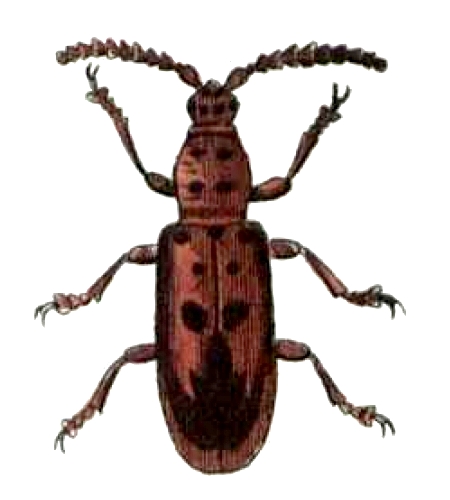
... first described species, well corresponding to Gahan's (1906) drawing
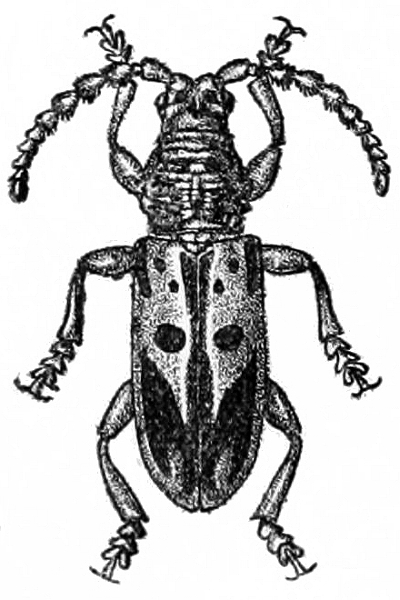
and less to P. plumiferus Pascoe, 1857 from India (synonym)

P. sulcatus Brongniart, 1891 from Luang-Prabang (Laos)

P. corallinus Hope, 1834 from Omlecope Dawar
I am unable to find this locality, but it belongs to a paper collecting species from New Holland (= Australia).
The beetle was collected by "Captain Smee" (a sailor?)
I think that Indonesia is a locality more credible than India.
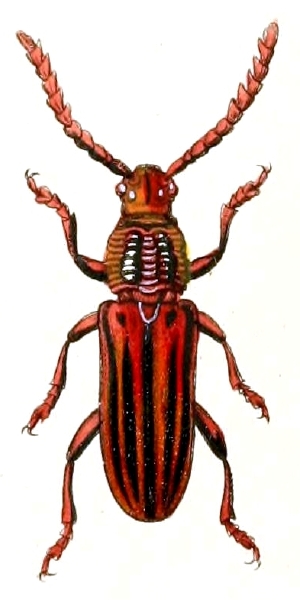 |
 |
|
|
Xavier
Scientific Collaborator
    
France
12203 Posts |
 Posted - 26/02/2017 : 12:09:19 Posted - 26/02/2017 : 12:09:19



|
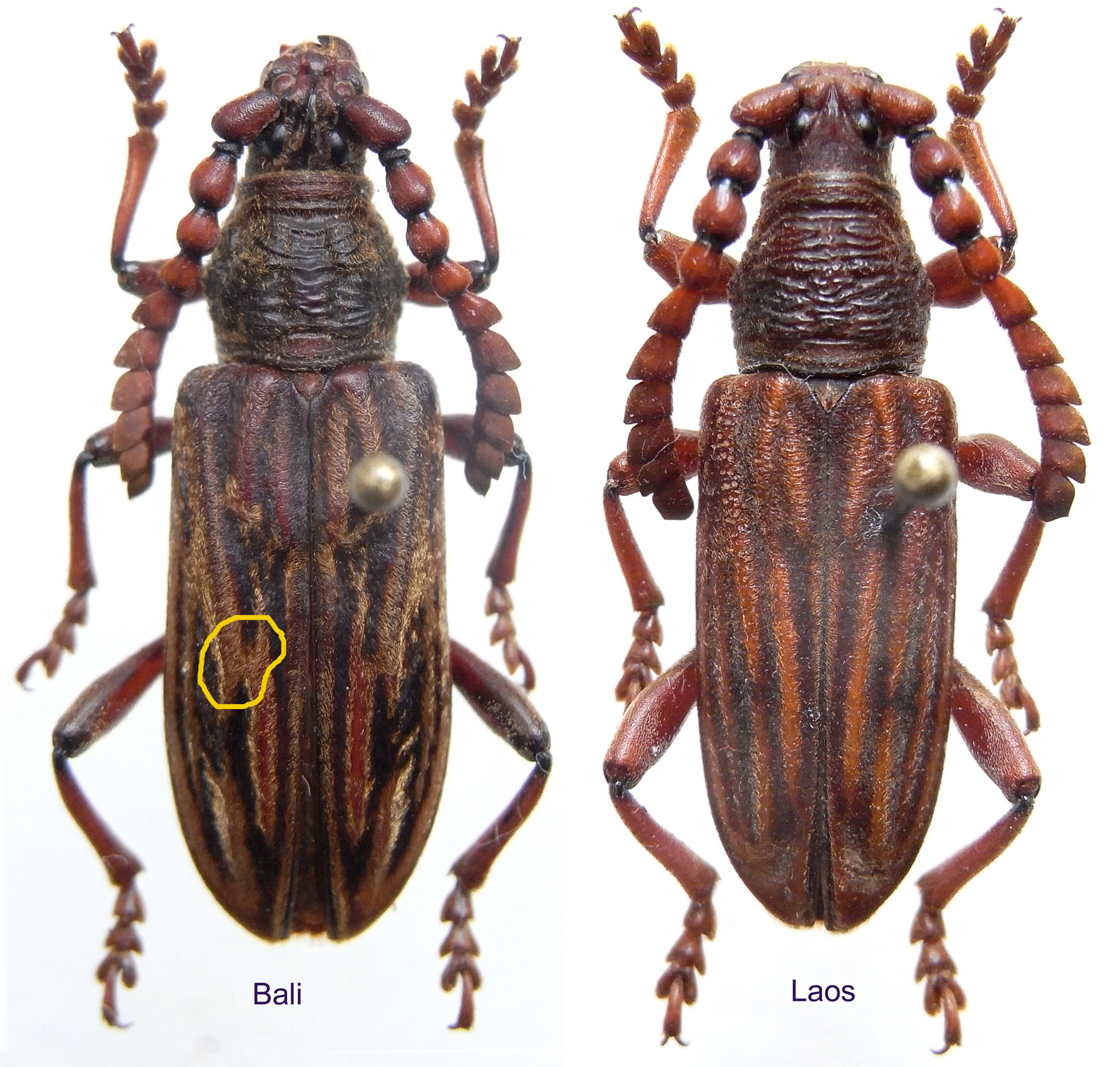
479.74 KB
Checked on different specimens: species from Bali is different than species from Laos. But I do not know what is it.
By the way, I do not understand why Pachylocerus sabahanus Vives & Heffern, 2012, described on a single female, is not compared to Pachylocerus sulcatus Brongniart, 1891 from Laos...and also known from Java (cf. BioLib)
Comparing holotype picture provided by Dan Heffern here , I can not see any difference with my "P. sulcatus", by reading description too.
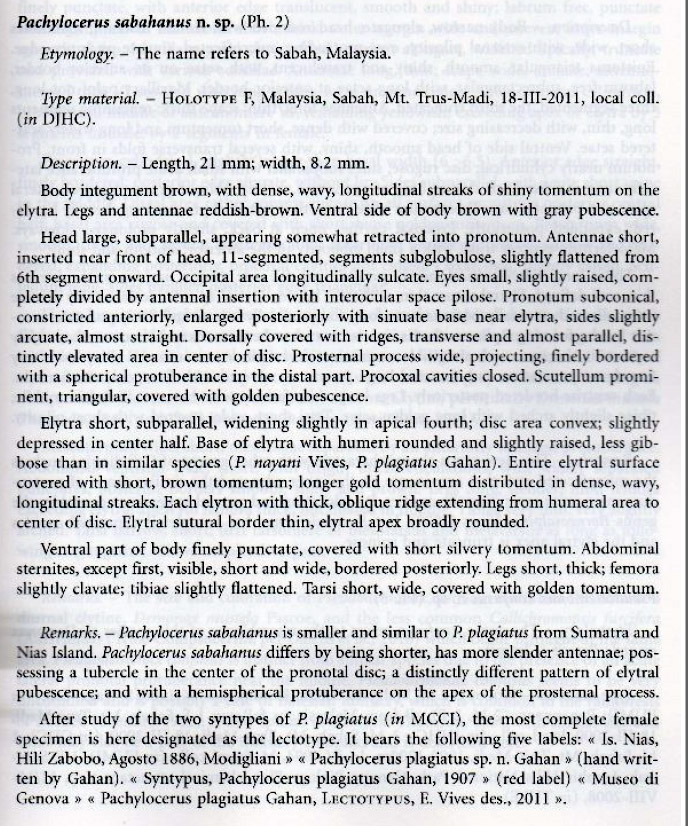
297.02 KB
Who can help me ? |
Edited by - Xavier on 26/02/2017 13:05:35 |
 |
|
|
dryobius
Member Rosenbergia
   
USA
1887 Posts |
 Posted - 26/02/2017 : 14:02:18 Posted - 26/02/2017 : 14:02:18



|
Hi Xavier,
I think we need a photograph of the holotype of P. sulcatus.
The re-description of P. sulcatus by Gahan (1906) speaks of two longitidunal slightly curved linear impressions on the disk of the pronotum. So, do we know positively that the specimens from Bali and Thailand are P. sulcatus? I don't have Brongniart's paper.
The patterns on the elytra of P. sabahanus, and specimens from Bali, Laos etc. all appear to be similar.
I admit there could be some synonymy involved. I wish we had more specimens to see variations, too. |
 |
|
|
Xavier
Scientific Collaborator
    
France
12203 Posts |
 Posted - 26/02/2017 : 14:24:19 Posted - 26/02/2017 : 14:24:19



|
Hi Dan,
About P. sulcatus, we have a picture here of Pachylocerus pilosus Gahan, 1894 which is considered as a synonym by BioLib.
I think many things are unclear about thoses species, and we need a complete revision of all genus with a comparative study of male genitalia, etc |
 |
|
| |
 Topic Topic  |
|


